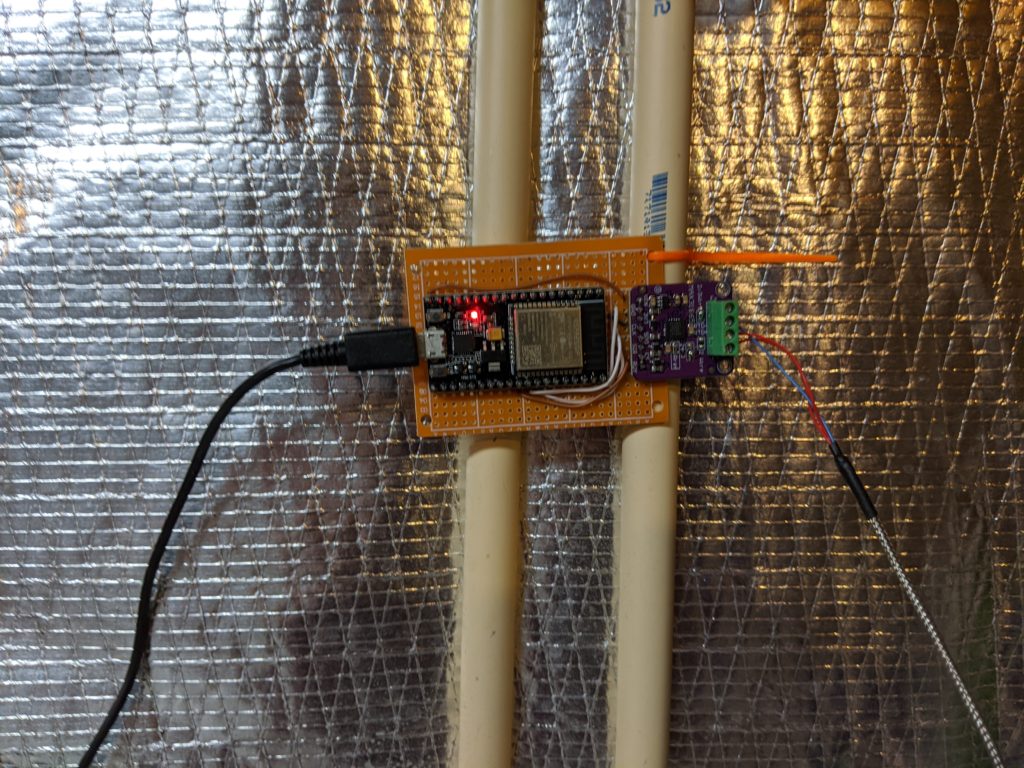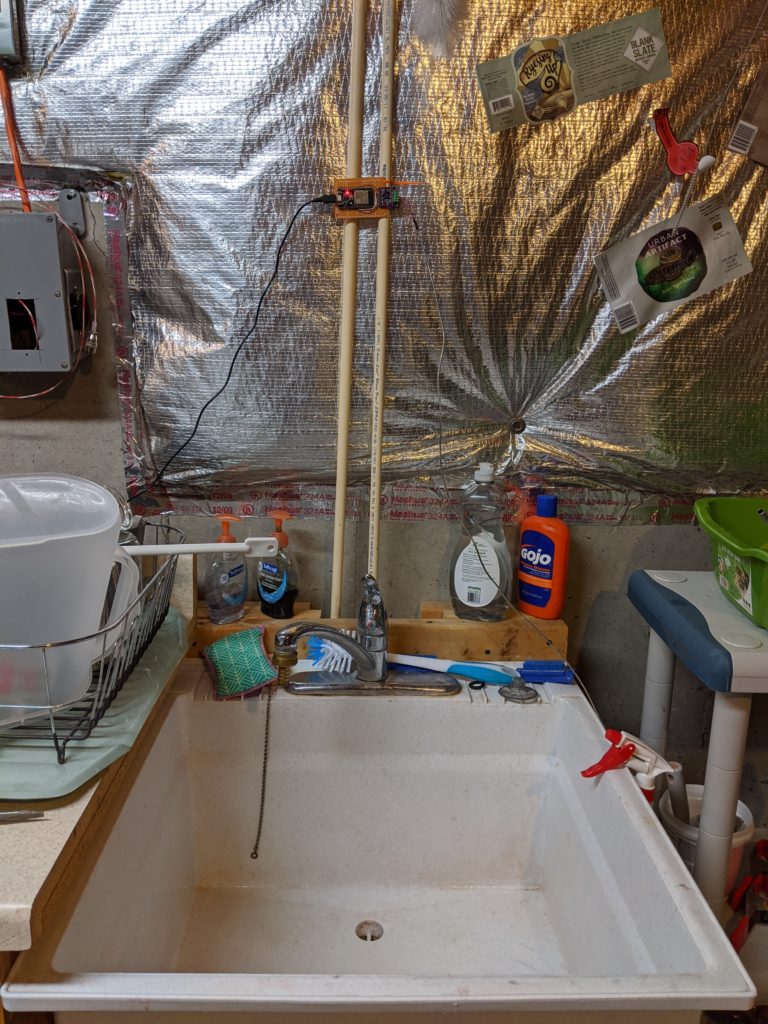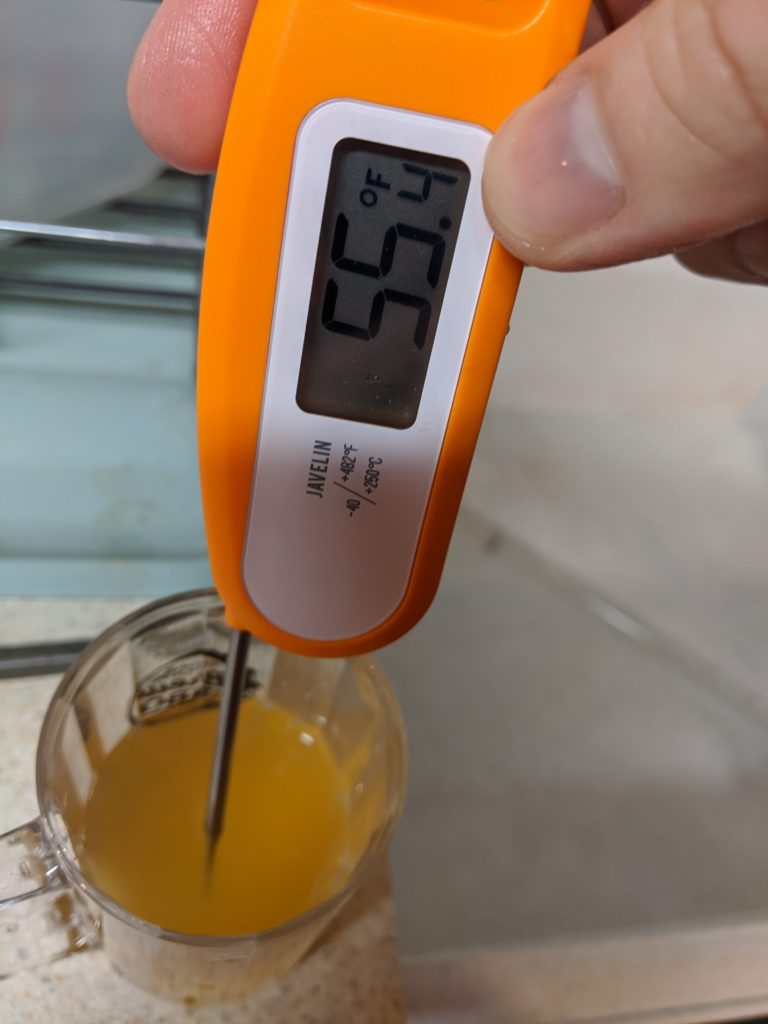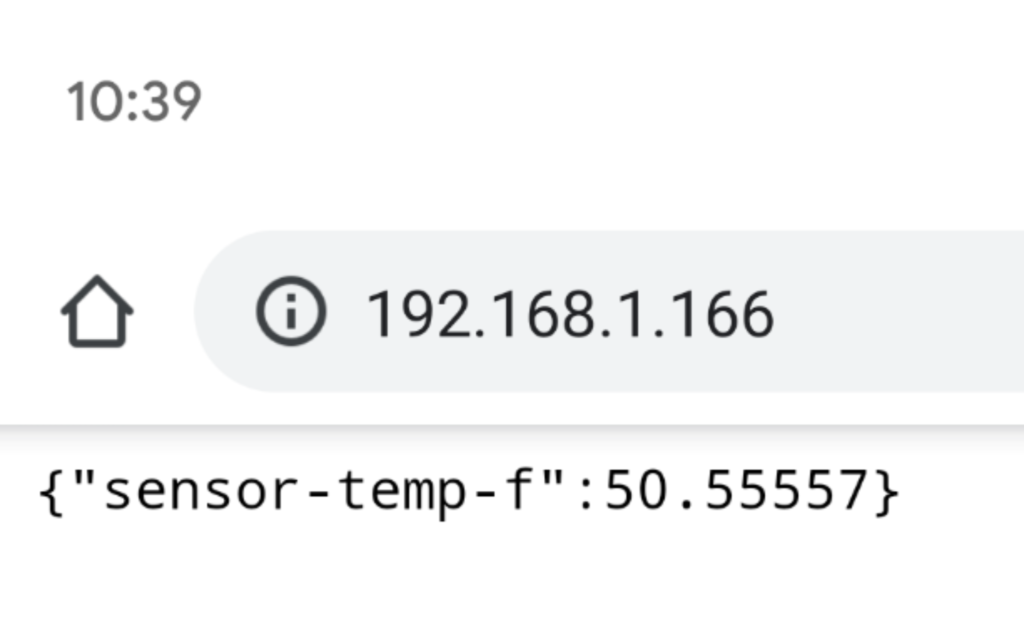Brew The Book 1: German Pilsner Brew Day
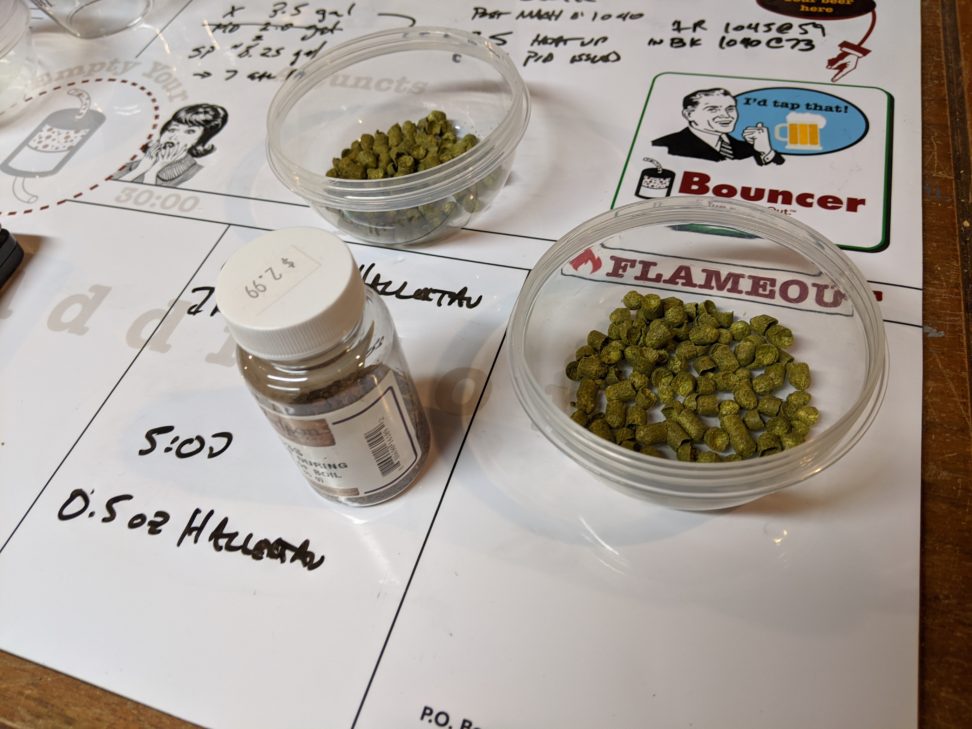
The first of the four from the Brew The Book series is a German Pilsner. I tried to make as few changes from the book as I could, but keeping within what a German Pilsner should be – a light, dry beer with crackery malt, floral hop aroma and flavor, and a bitter finish and aftertaste. It shouldn’t be strong (the style guidelines call for a 4.4% – 5.2% ABV beer with an OG of 1.048 – 1.056 and an FG of 1.010 – 1.015.
The book calls for 10.8 pounds of malt – I used 10 pounds of German Pilsner malt since my system would have yielded a significantly higher OG than the recipe calls for and also require more hop adjustments. I used Horizon hops for bittering instead of Perle, and adjusted to the same IBUs as the original recipe (~28 IBU). The final change was using two rehydrated packets of Saflager W34/70, which is supposedly the same yeast as the other recommended yeasts – WY2124/Bohemian Lager and WLP830/German Lager (the book recommends Saflager S-23 is the same as WY2206/Bavarian Lager and WLP820/Oktoberfest Lager).
During the brewday I mostly hit my numbers. The pre-boil and post-boil numbers seemed off until I double-checked and they were just about right on (my OG ended at 1.048, the expected was 1.049. This was nice since my mash was a little on the cool side (146F or so) and after I initially added a gallon that was supposed to be at 190 and saw no change, I realized there’s something wrong with my PID controller connection.
Everything else on the wort production side went as planned – in fact, the only things that generated a 🤬 or 🤬🤬 involved water (I spilled some while lautering).
One of my concerns after my last lager is getting a fruity mess – that lager still has some fruitiness that is likely some yeast esters. So I wanted to keep the fermentation cool. And after having some success cooling that lager down (and heating up my last IPA, which used Kveik yeast). To go one step further, I decided to install a monitoring probe. I started with a pt100 temperature sensor in the bottom of a scrap piece of PVC pipe. I then connected that to an ESP32 device running Micro Python and set it up with a way to see the temperature from anywhere on my home’s network.
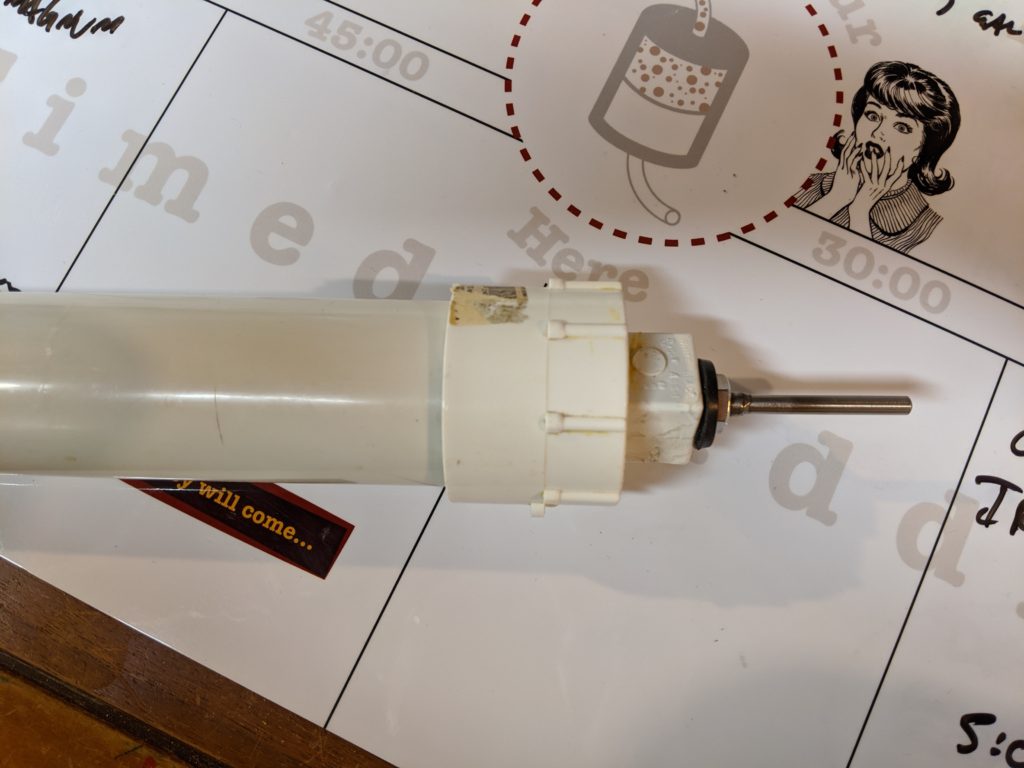
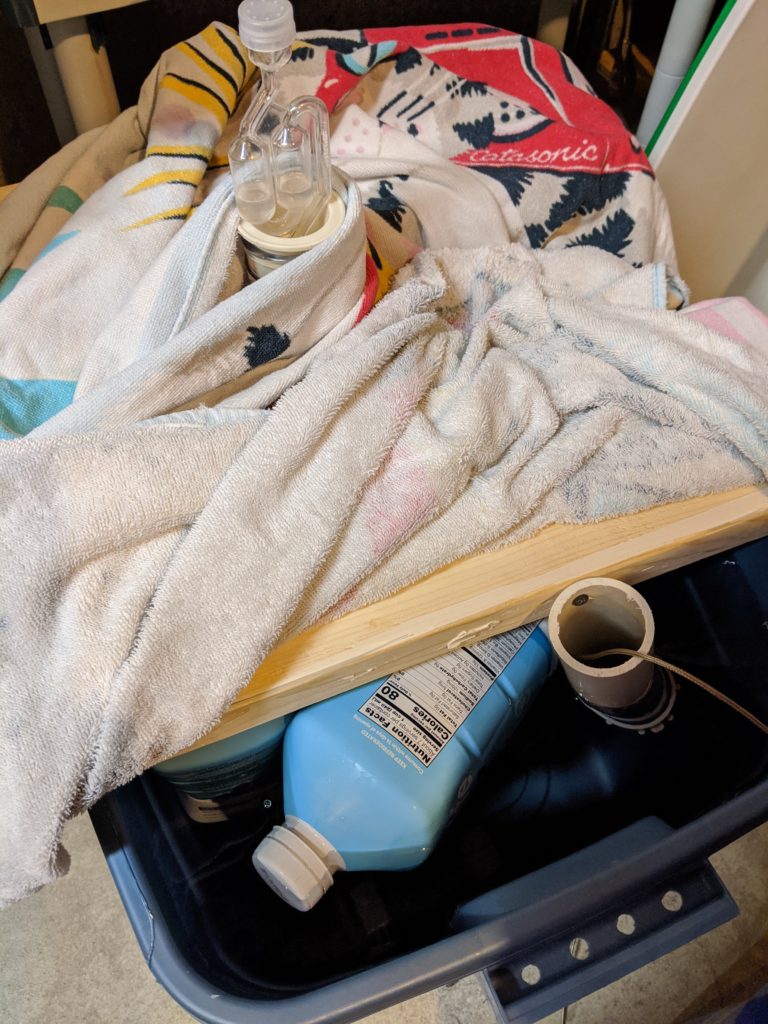
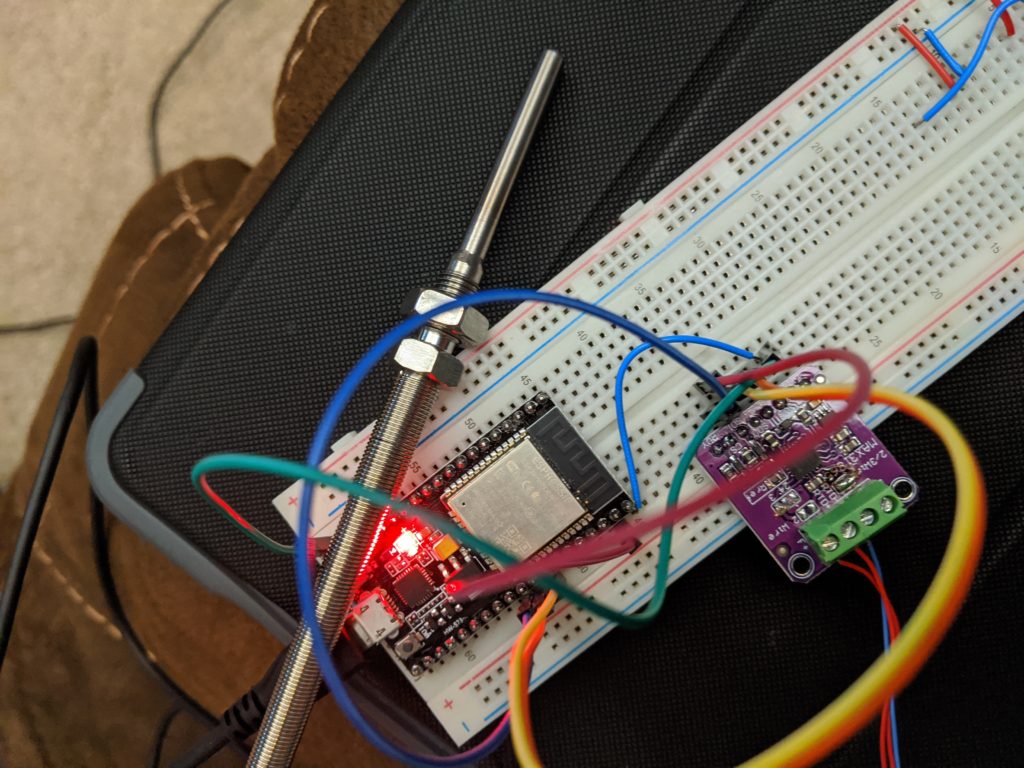
It looks better when I have it soldered up and in place… but not that good when zip-tied to a water pipe to keep it out of the way. I’ll fix that someday.
One of my concerns was how the water bath temp and fermenter temp interacted. Curiosity got me, so during the height of the fermentation, I pulled a sample from somewhere around the middle of the fermenter and compared it with the water bath…
The gallery above shows the temperature in the fermenter at 55.4F, and the water bath at 50.6 (which reads a degree high compared to the Javelin at the top of the water bath, but it may not be entirely homogeneous). The fermentation range (per Fermentis) is 54-59F, so 55 isn’t a problem, and it did start that low, so I’m hoping this means far fewer esters. 🍻
Stay tuned for the next episode!
